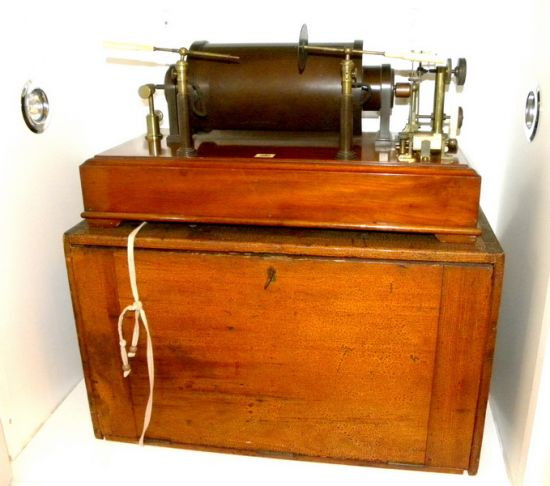 An antique piece of scientific equipment used in ground-breaking work to chart the chemical make-up of stars and planets has come up for sale. The 19th century apparatus belonging to Charles Piazzi Smyth, the youngest ever Royal Astronomer for Scotland, is being sold after 10 years in a private collection.....
An antique piece of scientific equipment used in ground-breaking work to chart the chemical make-up of stars and planets has come up for sale. The 19th century apparatus belonging to Charles Piazzi Smyth, the youngest ever Royal Astronomer for Scotland, is being sold after 10 years in a private collection..... Smyth was appointed as the Royal Astronomer in 1846 at the age of just 26 and is credited with a huge number of innovations in his 81-year life. The eccentric astronomer and scientist was responsible for introducing Edinburgh’s One O’Clock Gun and for installing the famous ‘time ball’ on top of the city’s Nelson Monument in 1853 – designed to give a time signal to the ships at Leith.
Italian-born Smyth was the first astronomer to establish an observatory at high altitude – a practice still continued today – and made major breakthroughs in weather forecasting. The induction coil that belonged to Smyth is for sale at Hemswell Antique Centres (www.hemswell-antiques.com), in Lincolnshire. The piece of equipment is believed to have been used by the astronomer to analyse the chemical make-up of stars and planets. Smyth worked with Alexander Stewart Herschel, a physics lecturer in Glasgow. Using the coil, the pair were at the cutting edge of mapping the chemical make-up of planets and stars – experiments that led to the modern study of astrophysics.
Smyth, whose nephew was Robert Baden-Powell, founder of the scout movement, carried out a number of surveys of the Great Pyramid of Giza. He is believed to have been the first person to accurately measure its dimensions. His research on the pyramids led to his contentious thesis arguing the monuments were built using a ‘pyramid inch’ – a measurement handed down from God via Noah’s son. Smyth argued against the proposed introduction of the metric system as ‘atheist’.
Smyth’s position caused much controversy at the time and, in part, led to his resignation from the post of Royal Astronomer. Yet his work gained many supporters, particularly in America, and it is believed many of the railroads there were built using his measurement system. His innovations extended to photography. He was one of the first people to use a camera flash, when he used his specially designed camera to take pictures inside the pyramids. A collection of his papers, letters and scientific instruments are held by the Royal Observatory in Edinburgh.
The induction coil, which is in working order, is on sale for £2,000. It still has its original transit box inside the lid of which is pasted a cutting from an auction catalogue dated 6/10/1933 stating the coil belonged to Professor Piazzi Smith.
Renowned author, TV presenter and Cambridge University Professor Simon Schaffer is an expert on the life and importance of Smyth’s work. He believes the man’s work was hugely influential in a number of fields but, in particular, his drive to get the public interested in science was vital. “He was a member of a heroic generation of Victorian scientists whose work made modern technology both plausible and possible,” he said. “He was hugely influential in creating a public appetite for scientific research. He was the Patrick Moore of his day.”
Hemswell Antiques Centre’s managing director Robert Miller said: “It’s hard to fathom that an item that looks so unassuming could have been at the centre of such amazing scientific breakthroughs. We are constantly surprised by the number of items passing through our centres that have played an important part in history but every antique has a unique story and that’s what is so fascinating about our work.”